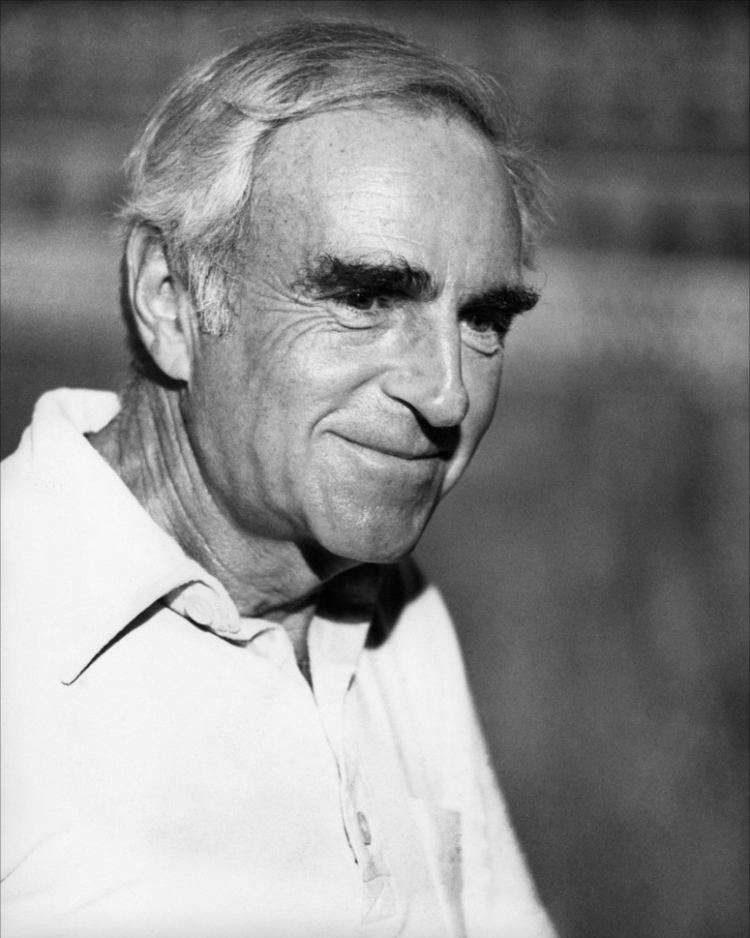
Introduction
Richard Fleischer, a visionary sci-fi filmmaker, left an indelible mark on the genre with his captivating storytelling and innovative techniques. Throughout his career, he crafted films that transported audiences to extraordinary worlds and explored thought-provoking themes. This article delves into the world of Richard Fleischer and explores his contributions to science fiction cinema, which continue to shape the future of filmmaking.
Exploring Richard Fleischer's Sci-Fi Filmography
Richard Fleischer directed several noteworthy sci-fi films that pushed the boundaries of imagination. Let's take a closer look at some of his most influential works:
- "Soylent Green" (1973): A dystopian tale set in an overpopulated world ravaged by ecological disasters. The film explores themes of overconsumption, social inequality, and the consequences of unchecked technological advancement.
- "Fantastic Voyage" (1966): A captivating adventure where a team of scientists is miniaturized and injected into a human body to save a life. With stunning visuals and imaginative storytelling, Fleischer takes viewers on a journey through the human anatomy like never before.
- "20,000 Leagues Under the Sea" (1954): Based on Jules Verne's novel, this film follows a group of explorers who encounter the enigmatic Captain Nemo and his advanced submarine, the Nautilus. Fleischer's adaptation brings Verne's underwater world to life with groundbreaking special effects and a thrilling narrative.
- "The Time Machine" (1960): Adapted from H.G. Wells' novel, this film tells the story of a time traveler who journeys to the distant future and witnesses the divide between the Eloi and the Morlocks. Fleischer's depiction of a post-apocalyptic future and his exploration of societal issues make this film a sci-fi classic.
Visionary Filmmaking Techniques of Richard Fleischer
Futuristic World-Building
Richard Fleischer possessed a remarkable ability to construct futuristic worlds that captivated audiences. His attention to detail and visionary approach brought these worlds to life. Fleischer's visionary world-building techniques involved:
- Imaginative set design: Fleischer combined futuristic aesthetics with functional realism, creating visually stunning and believable environments that transported viewers to other worlds.
- Creative use of costumes: Fleischer's films featured distinct and futuristic costume designs that enhanced the characters and contributed to the overall immersive experience.
- Attention to cultural and societal details: Fleischer paid careful attention to the cultural and societal aspects of his futuristic worlds, incorporating elements that reflected the possible evolution of humanity and technology.
- Thematic symbolism: Fleischer's world-building often included symbolic elements that conveyed deeper meanings and explored social, political, and environmental themes.
Cutting-Edge Visual Effects
Fleischer's films showcased groundbreaking visual effects for their time, elevating the sci-fi elements to new heights. Some notable techniques and achievements in Fleischer's visual effects include:
- Miniatures and practical effects: Fleischer employed the use of miniatures and practical effects to create realistic and visually stunning scenes. From elaborate spacecraft to intricate cityscapes, these effects added depth and grandeur to his films.
- Chroma keying and matte painting: Fleischer utilized chroma keying and matte painting techniques to seamlessly blend actors and sets with otherworldly environments. This allowed him to create visually impressive scenes that transported audiences to extraordinary worlds.
- Optical illusions: Fleischer experimented with optical illusions and visual trickery to achieve awe-inspiring effects. Through clever camera work and compositing, he created mind-bending sequences that defied the boundaries of reality.
- In-camera effects: Fleischer often relied on in-camera effects, such as forced perspective and clever lighting, to achieve stunning visuals without extensive post-production. This hands-on approach added a sense of authenticity to his films.
Futuristic Sound Design
Fleischer recognized the importance of sound in creating immersive sci-fi experiences. His films featured futuristic soundscapes that enhanced the storytelling. Key elements of his sound design include:
- Electronic and synthesized sound effects: Fleischer utilized innovative electronic and synthesized sound effects to evoke a sense of futurism. These sounds, often created specifically for his films, added an otherworldly quality to the auditory experience.
- Collaboration with composers: Fleischer worked closely with composers to develop unique musical scores that complemented the futuristic themes of his films. These scores added emotional depth and further enhanced the immersive nature of his storytelling.
- Ambient and atmospheric soundscapes: Fleischer employed ambient and atmospheric soundscapes to create a sense of place within his futuristic worlds. By carefully crafting the sonic environment, he transported viewers into the heart of his imaginative narratives.
Richard Fleischer's Impact on the Sci-Fi Genre
Richard Fleischer's visionary approach to sci-fi filmmaking has had a lasting impact on the genre. His contributions continue to inspire and shape the future of sci-fi cinema. Some notable aspects of his influence include:
- Innovative storytelling techniques: Fleischer's narrative structures and thematic exploration of social issues have served as a blueprint for future filmmakers, inspiring them to push the boundaries of the genre.
- Visual and technical innovations: Fleischer's groundbreaking visual effects and attention to detail set new standards for sci-fi filmmaking. His techniques and innovations have influenced subsequent generations of filmmakers.
- Exploration of societal themes: Fleischer's films often delved into societal and ethical issues, using science fiction as a vehicle to reflect and comment on contemporary concerns. This approach has been emulated by many filmmakers who seek to engage audiences on a deeper level.
Future of Sci-Fi Filmmaking: Evolving Narratives and Technology
Evolution of Sci-Fi Storytelling
Sci-fi storytelling has undergone significant transformations over the years, building upon the foundations laid by visionaries like Richard Fleischer. Today, the genre continues to evolve, incorporating new themes and narrative techniques. Some current trends in sci-fi storytelling include:
- Exploration of artificial intelligence: Many contemporary sci-fi films delve into the implications of advanced AI, questioning the boundaries of humanity and examining the ethical dilemmas that arise.
- Dystopian narratives: Dystopian themes have gained prominence in sci-fi storytelling, reflecting concerns about social, political, and environmental issues. These narratives often depict bleak futures, exploring the consequences of humanity's actions.
- Post-apocalyptic scenarios: Post-apocalyptic stories present a world devastated by catastrophic events. They offer cautionary tales and contemplate our ability to adapt and rebuild in the face of adversity.
Technological Advancements in Filmmaking
Technological advancements continue to shape the future of sci-fi filmmaking, enabling filmmakers to bring their imaginative visions to life. Some emerging technologies that could revolutionize the genre include:
- Artificial intelligence and machine learning: AI technologies are being increasingly used in filmmaking, enhancing visual effects, generating realistic simulations, and streamlining production processes.
- Virtual and augmented reality: VR and AR offer immersive cinematic experiences, allowing viewers to step into the worlds of their favorite sci-fi films and interact with the narrative on a whole new level.
- Advanced CGI and photorealistic rendering: CGI has become an integral part of modern sci-fi filmmaking, enabling filmmakers to create breathtaking visuals and realistic environments that were once only imaginable.
